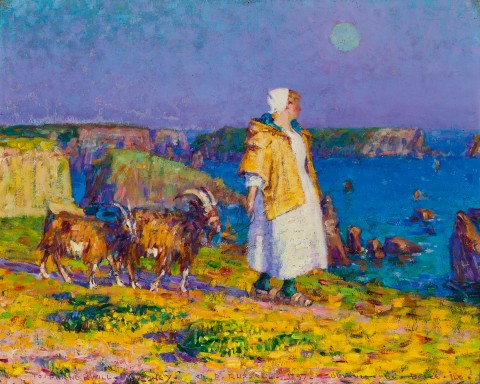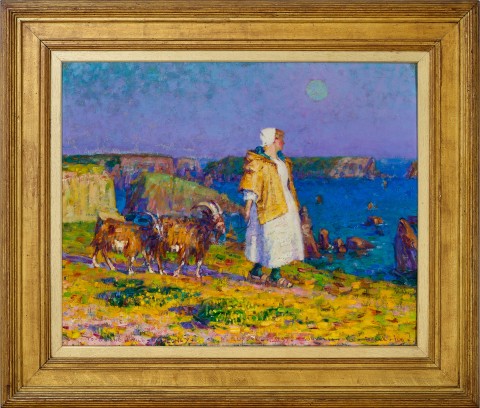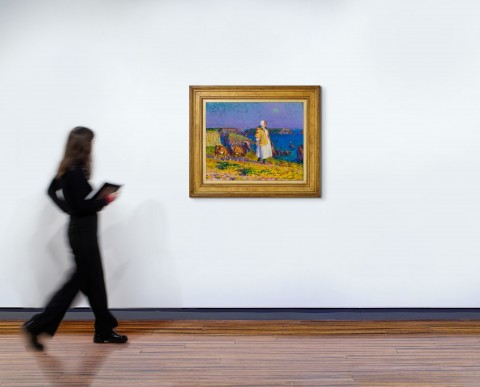SOUVENIR DE BELLE–ÎLE (MARIANNA RUSSELL WITH GOATS, GOULPHAR, BELLE–ÎLE), 1897
JOHN PETER RUSSELL
oil on canvas
65.0 x 81.5 cm
signed, dated and inscribed with title lower centre: TO. FRIEND. WILL. MALONEY. J. P. RUSSELL. 1897. - SOUVENIR. DE. BELLE. iLE.
signed, dated and inscribed verso: J. P. RUSSELL. / BELLE ILE / 1897.
artists’ colourmen stamp verso: Rey & Perrot, Paris
framer's label attached verso: R J Stannard, London
Dr William Maloney, Melbourne, a gift from the artist in 1897
Thence by descent
Private collection, Melbourne, daughter of the above
Thence by descent
Private collection, Melbourne
On loan to the National Gallery of Victoria, Melbourne, 1942 - 1943
John Peter Russell: Australian Impressionist, University Art Museum, University of Queensland, Brisbane, 25 February – 19 March 1978; National Gallery of Victoria, Melbourne, 30 March – 6 May 1978; Art Gallery of New South Wales, Sydney, 21 May – 26 June 1978, cat. 35 (partial label attached verso)
Galbally, A., The Art of John Peter Russell, Sun Books, Melbourne, 1977, cat. 154, pp. 11, 106
Bergère en blanc avec des chèvres, c.1897, oil on canvas, 110.0 x 178.0 cm, in the collection of the Musée d'Orsay, France, on loan to the Musée des Jacobins, Morlaix, illus. in Jourdan, P. et al., John-Peter Russell, un Impressionniste Australien, Musee des Jacobins, Morlaix, 1997, p. 31
We are grateful to Peter Perry OAM for his assistance with this catalogue entry.
230256 Russell Portrait_cmyk.jpg
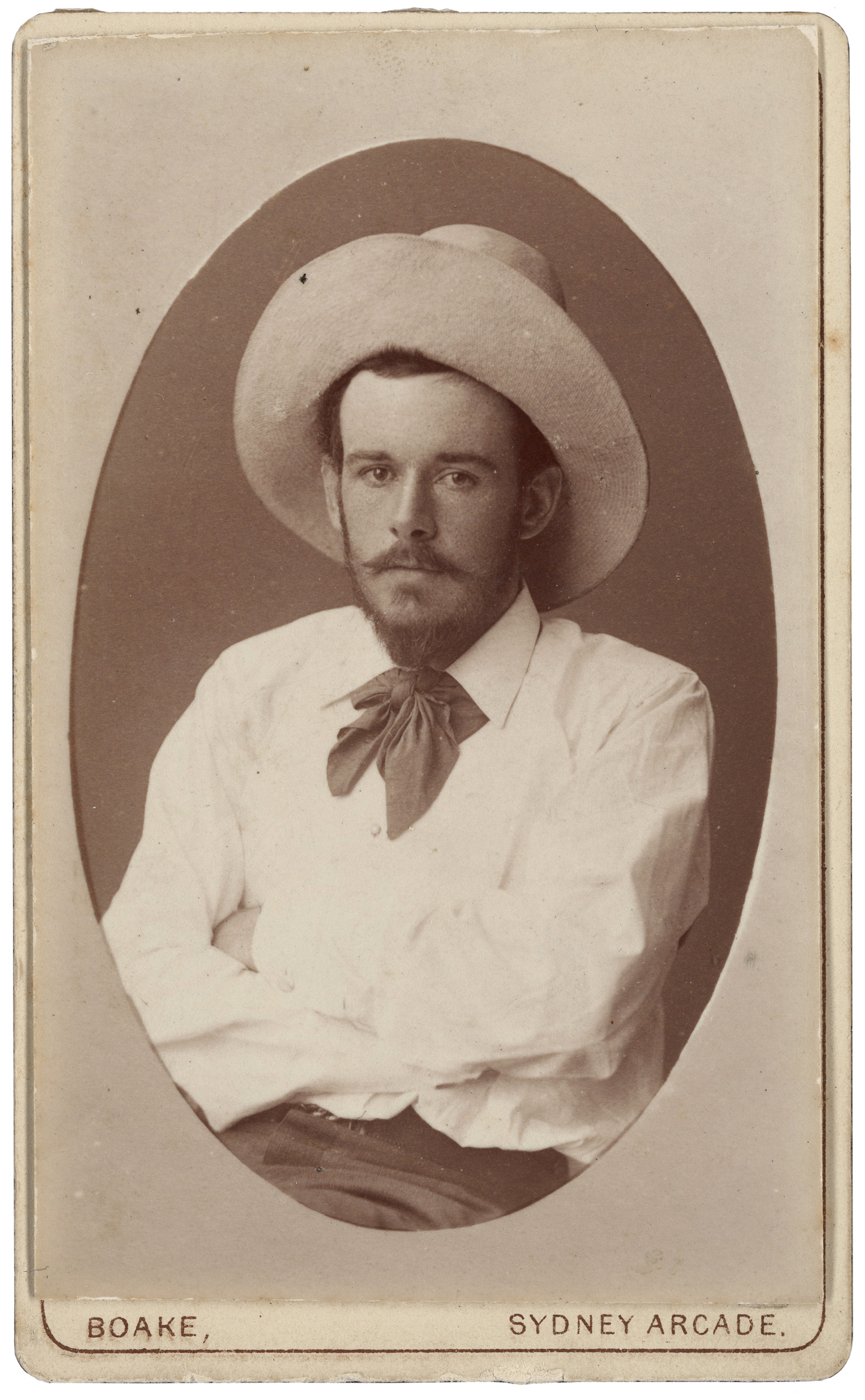
John Peter Russell holds a unique place in Australian art history as a result of his close association with avant-garde circles in 1880s Paris and his firsthand acquaintance with masters of European Impressionism and Post-Impressionism. As a student at Fernand Cormon’s atelier in Paris in the mid-1880s, Russell worked alongside Émile Bernard, Henri de Toulouse-Lautrec and later, Vincent van Gogh, with whom he established an enduring friendship.1 On a summer break from Paris in 1886, Russell spent several months on Belle-Île, one of a group of small islands off the coast of Brittany. It was here that he met and befriended Claude Monet who he saw working en plein air, famously introducing himself by asking if Monet was indeed ‘the Prince of the Impressionists’. Inevitably flattered, Monet, who was eighteen years Russell’s senior, took a liking to the young Australian and dined with him and his beautiful wife-to-be, enjoying their hospitality and company during his stay on the island. Uncharacteristically, Monet also allowed Russell to watch him work and on occasion, to paint alongside him, experiences that provided an extraordinary insight into the techniques and working method of one of the founders of the Impressionist movement. The influence on Russell was significant and the paintings he made in Italy and Sicily only a few months later show him working in a new style, creating compositions that are made up of strokes of pure high-keyed colour.2 ‘… But when we get to color. The gorse & heather. Yellow & purple, orange boat sails, blue sea. Red rocks, Green sea. All a matter of feeling. Tis in the man with brush & paint pot or it is not.’3
230256 rodin cmyk.jpg
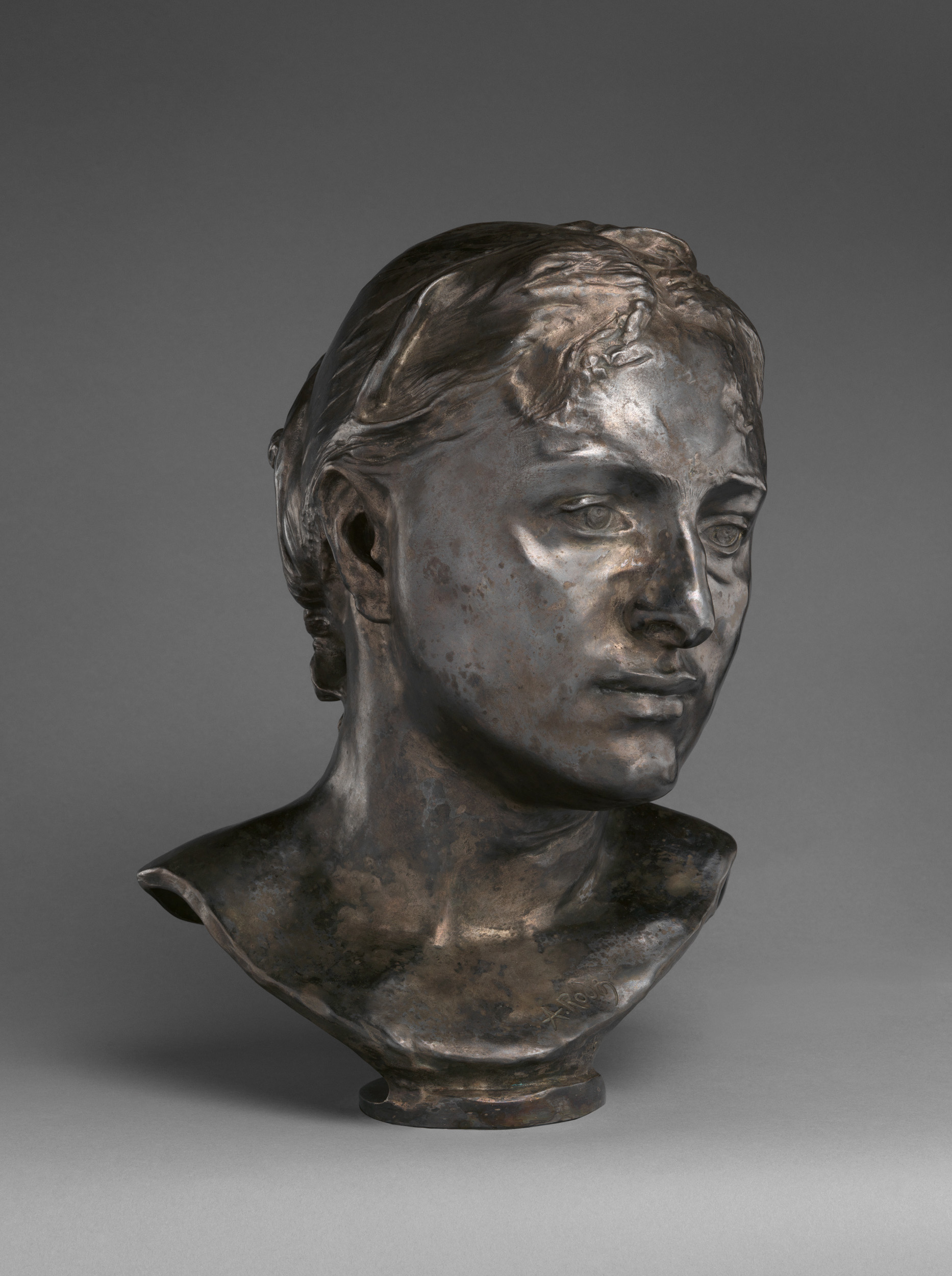
(active 1954–1969, French)
della Torre), 1888
New York
230256 Photograph of Marlanna Mattlocco cmyk.jpg
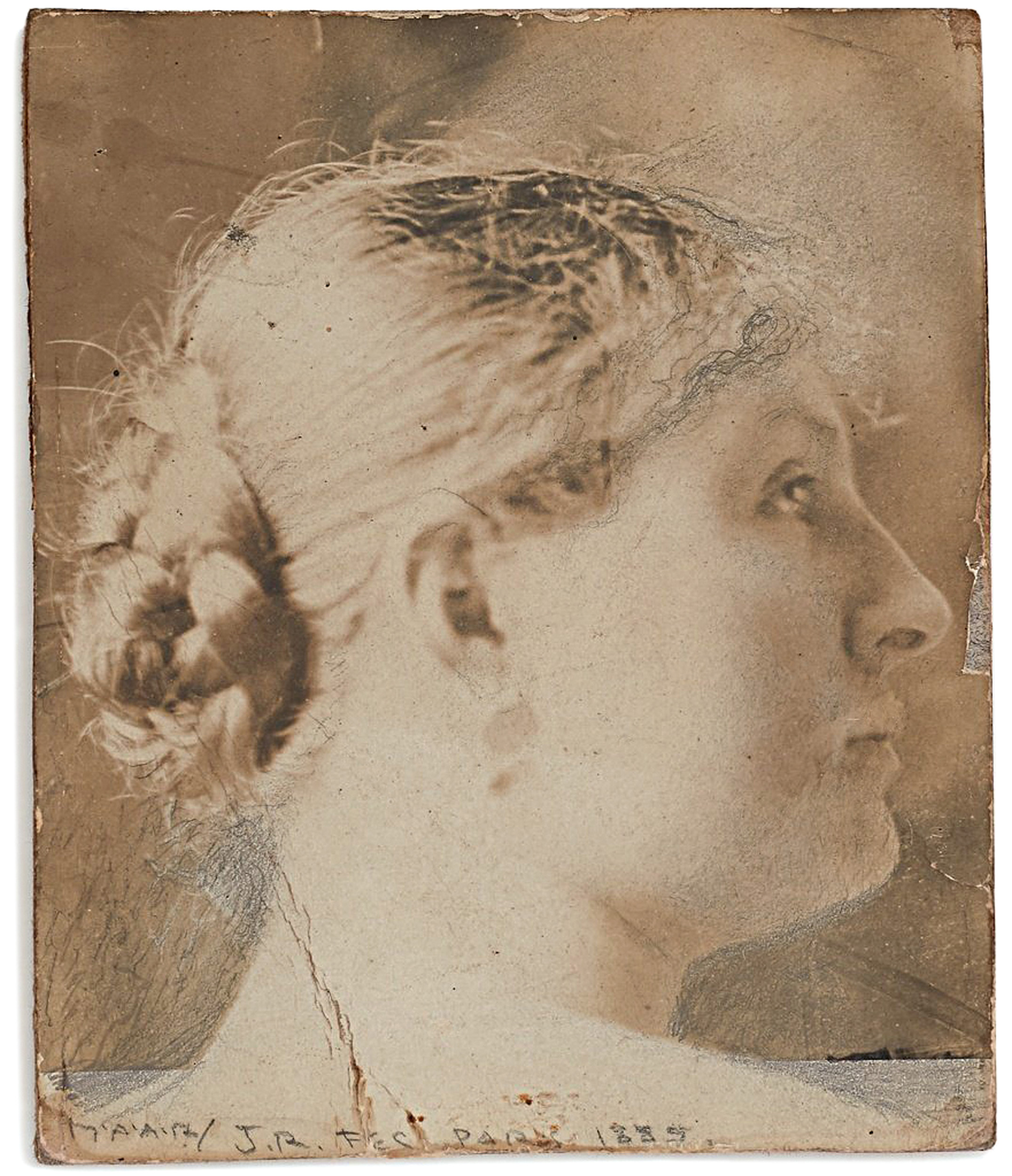
Mattiocco overdrawn by
John Russell, Paris, 1885
of New South Wales, Sydney
Captivated by the rugged beauty of Belle-Île and attuned to the possibilities that both the environment and the simple, rural way of life presented for his art, Russell – whose inherited wealth meant he didn’t have to find paid employment – bought land overlooking the inlet of Goulphar in 1887. Writing to Tom Roberts, he said, ‘I am about to build a house in France. Settle down for some five years. Get some work done. It will be in some out of the way corner as much as a desert as possible.’4 Around 1884 Russell had met Marianna Mattiocco, probably in the studio of his friend, the British artist Harry Bates (1850 - 99). An Italian beauty, she was the model for Bates’ bas-relief sculpture, Dido, Queen of Carthage, 1885 (National Museum of Wales, Cardiff) and had also possibly modelled for Rodin.5 Following the birth of the first two of their twelve children (many of whom did not survive infancy), they formalised the relationship, marrying in 1888. Russell commissioned Rodin to sculpt a portrait bust of Marianna early that year – cast in 1889, it was the first of several works which the master modelled on her classical features – and this initiated a longstanding and intimate friendship between the artists.6
230256 cmyk.jpg
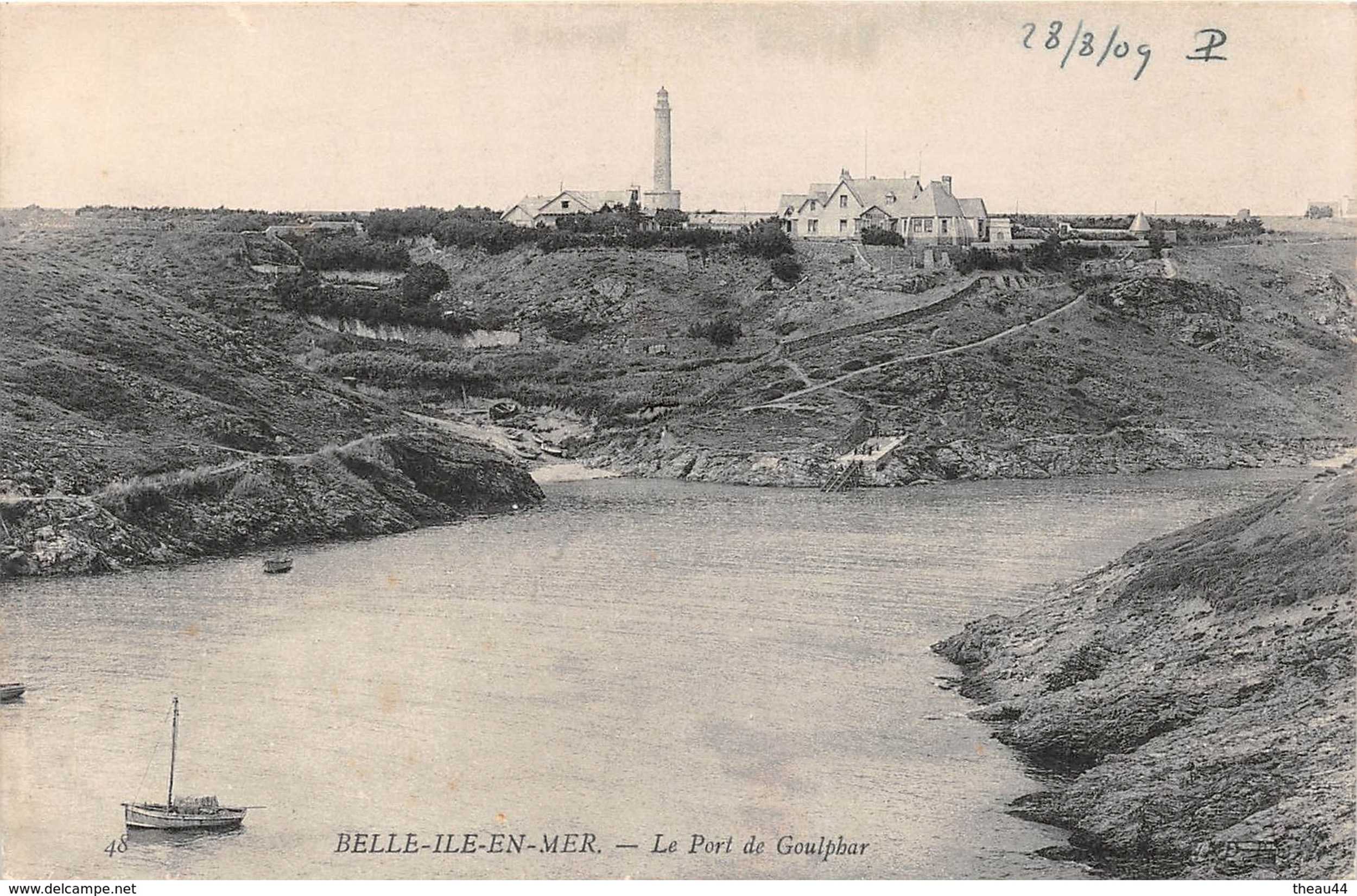
‘Le Château de l'Anglais’ prominent above the cliff, c.1909
Sarah-Bernhard-at-Belle-Ile-768x488.jpg
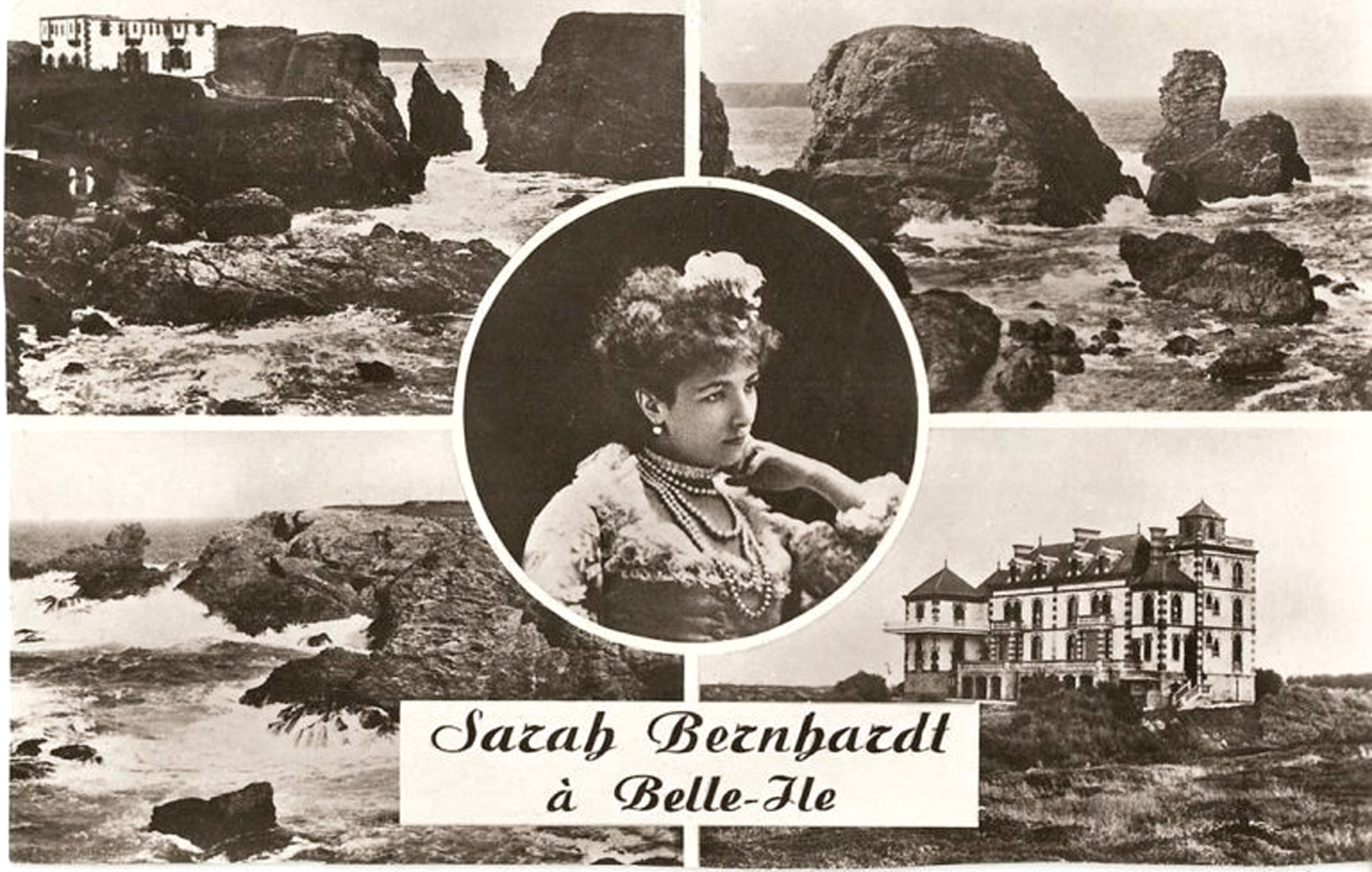
The family moved to Belle-Île in the summer of 1888 and lived there permanently until 1909 - 10 when the house was sold following Marianna’s premature death. Russell developed an intimate knowledge of the island’s geography, both from the land and the sea, and this informed many of his best-known paintings such as Port-Goulphar, Belle-Île, 1887 (Art Gallery of New South Wales) and Rough Sea, Belle-Île, 1900 (National Gallery of Victoria), which capture the distinctive light, changing colours and atmospheric conditions of the area. The island attracted many visitors. Even Sarah Bernhardt bought property and spent her summer holidays on Belle-Île from 1894 - 1922, saying, ‘I like to come every year to this picturesque island, to taste all the charm of its wild and grandiose beauty. I draw new artistic forces from its invigorating and restful sky.’7 The young Henri Matisse spent three months on Belle-Île in 1896, fortuitously meeting Russell who introduced him to Monet’s techniques and the work of van Gogh, gifting him one of the pen and ink drawings the Dutchman had sent him from Arles some years earlier. This encounter contributed to a dramatic transformation in Matisse’s approach to colour which his biographer, Hilary Spurling, described as ‘a way of seeing: the first inklings of the pursuit of colour for its own sake that would draw in the end on his deepest emotional and imaginative resources.’8
Russell painting 230256 (cropped) cmyk.jpg
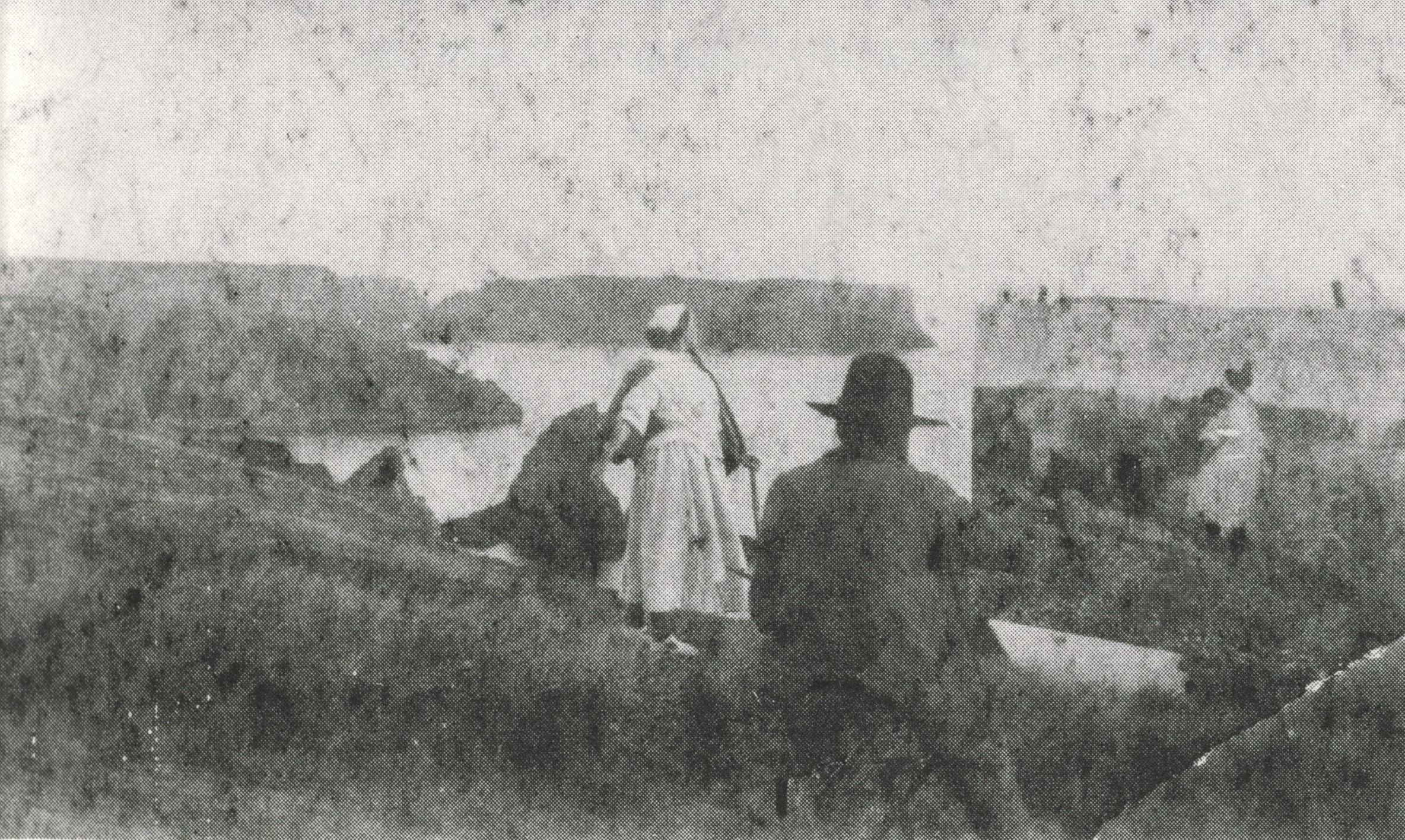
avec des chèvres, c.1897
230256 Russell cmyk.jpg
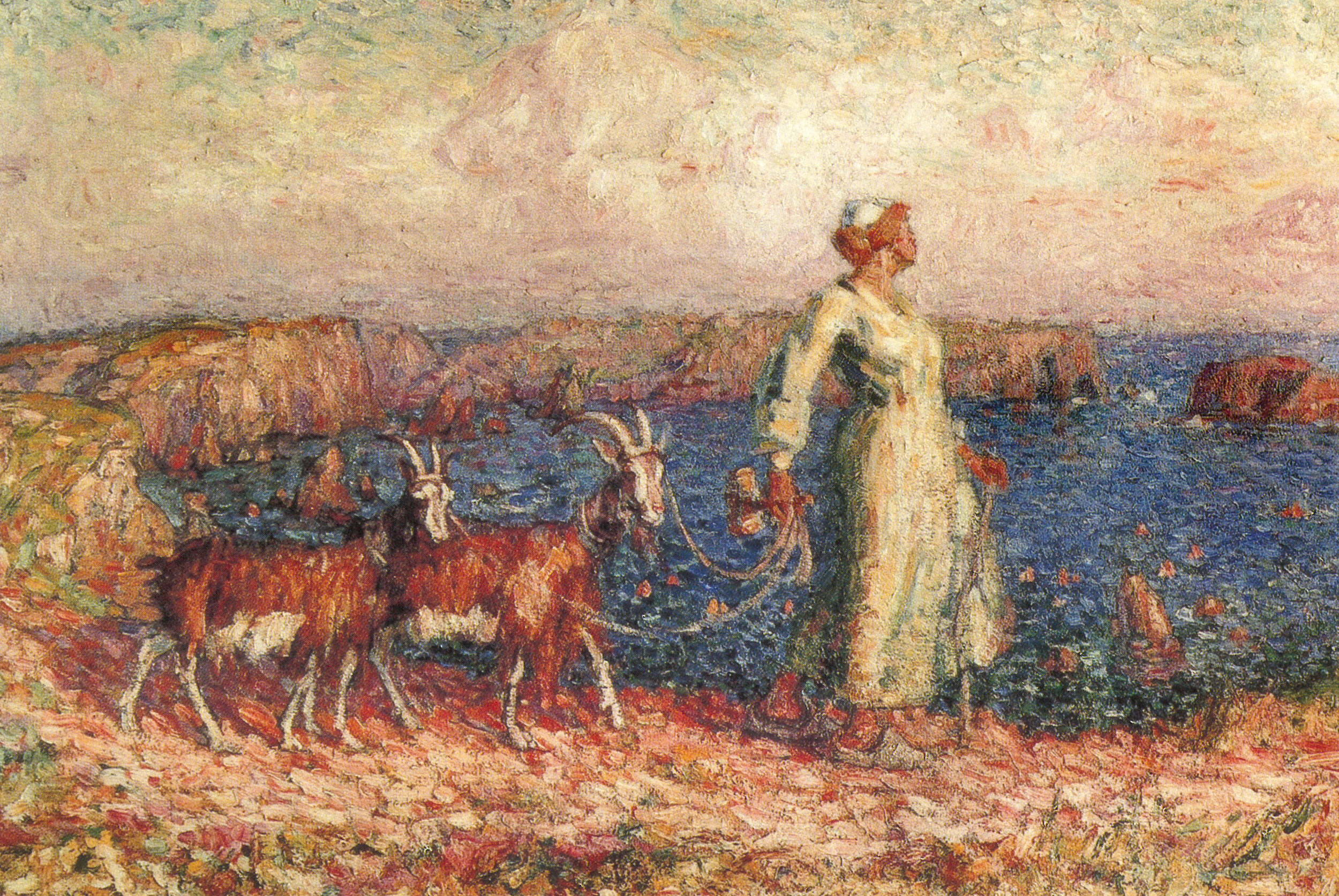
on loan to the Musée des Jacobins, Morlaix
Russell continued to be inspired by Belle-Île, writing to Rodin in 1890, ‘the colours completely bowl me over. On some days here it’s ravishing but impossible for my poor palette.’9 His mastery and expressive use of colour is on full display in Souvenir de Belle-Île, 1897. In the foreground a figure wearing traditional Breton dress leads a pair of goats along the cliff top, brilliantly illuminated by a full moon that sits high in the sky. The dramatic, predominantly purple sky appears to glow and the sensation of the strange ‘in-between’ light of dusk, which teases the eye and makes it hard to focus clearly, is skilfully rendered. The crisp white of the figure’s dress and cap provides a central focal point, highlighting the vivid colours of the surrounding scene: the yellow and greens of the grassy ground, the purple shadows cast by the figure and her goats, and the deep blue tones of the ocean – described by Monet as ‘an improbable sea of colours’10 – with its distinctive rocky outcrops. While Russell is renowned as a bold and inventive colourist, this is surely one of the most dazzling examples of his work.
JohnRUSSELL-DrWillMalo-cmyk.jpg
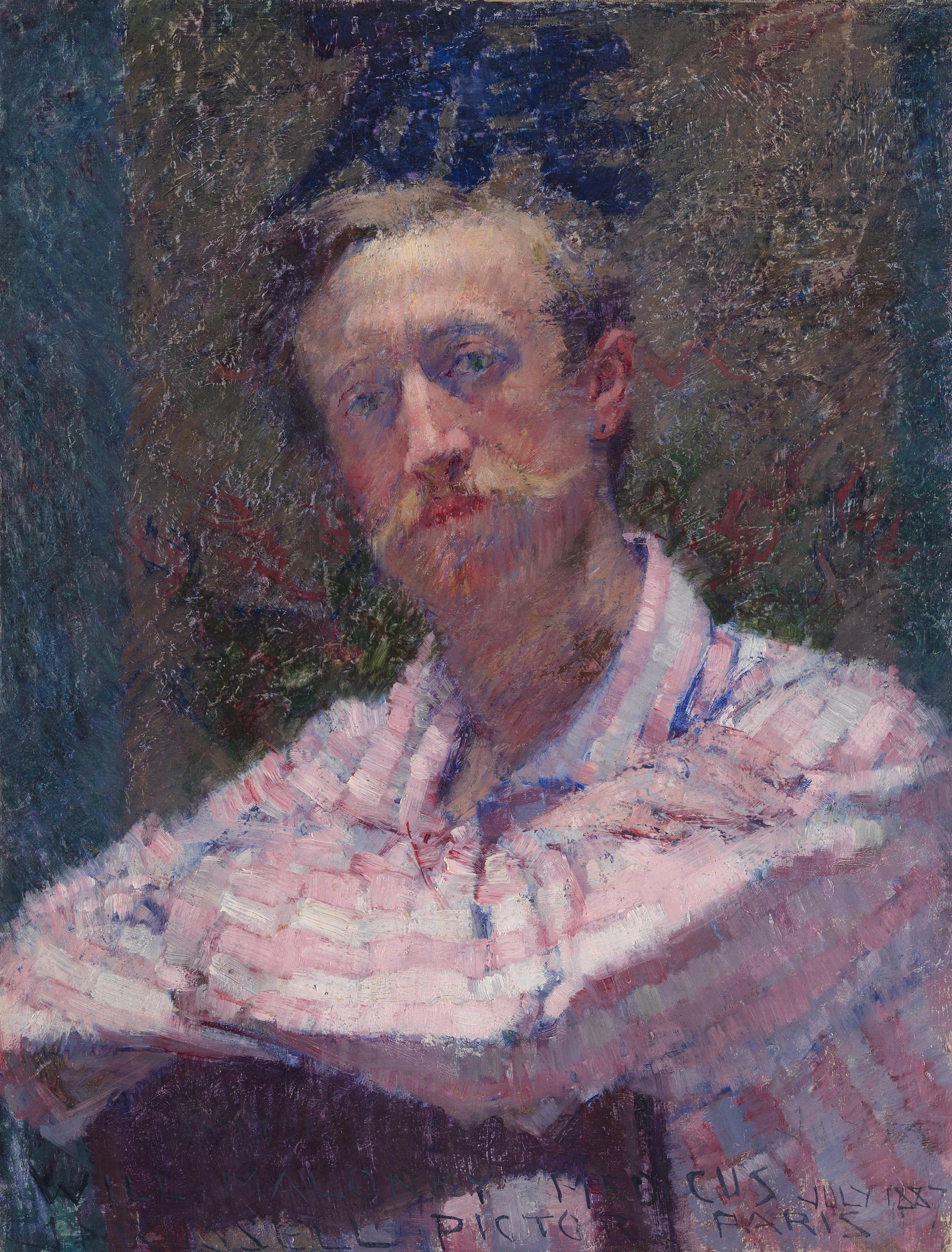
Melbourne
A contemporary photograph shows Marianna dressed in local costume, posing on the cliff top as Russell, seated at an easel in the foreground, works on the larger, closely related painting, Bergère en blanc avec des chèvres, c.1897 (Musée d’Orsay, France). While the goats do not appear in the photograph, they were family pets and a familiar element of the Russell’s cliff-top home, which consisted of a large stone house and expansive garden, as well as various outbuildings including a studio that opened directly out to the ocean. In addition to highlighting the importance for Russell of working directly from the subject, the photograph and a comparison of the two paintings reveals aspects of his working method; changes in perspective and scale, varied use of colour and compositional choices that in the larger painting, result in a stronger emphasis on the figure who is depicted as an almost heroic representation of traditional rural life. Such subject matter reflects the prevailing influence of Barbizon School painter Jean-François Millet, whose paintings celebrated the nobility of peasant workers and their labour, and a growing awareness at the end of the nineteenth century that this way of life was disappearing. According to Ann Galbally, ‘It was against a background of romanticization of the primitive that [Russell] moved his wife and family to Belle-Île … and to ultimately forswear subject-painting, decorative art, even portrait painting in favour of a painterly identification with his rural surroundings.’11
As the inscription which runs along the bottom of the painting indicates, Souvenir de Belle-Île was a gift from the artist to his friend Will Maloney, an Australian doctor and later in life, long-serving Labor politician. In the summer of 1883 Maloney, Russell, his brother Sydney and Tom Roberts travelled through France and Spain and Maloney, who subsequently worked at hospitals in London, visited Russell in Paris on several occasions. It was on his final visit in 1887, prior to his return to Australia, that Maloney sat for Russell who painted a small portrait of his friend which is now in the collection of the National Gallery of Victoria. An informal study of the young Maloney, the portrait holds particular significance as the first painting made using the Impressionist technique to arrive in Australia.12 Maloney and Russell maintained a correspondence and in 1897, Russell sent this painting to his friend in Melbourne, which has remained in the possession of the Maloney family ever since.
230256 MONET v.2 Rocks at Port-Goulphar, Belle-Île cmyk.jpg
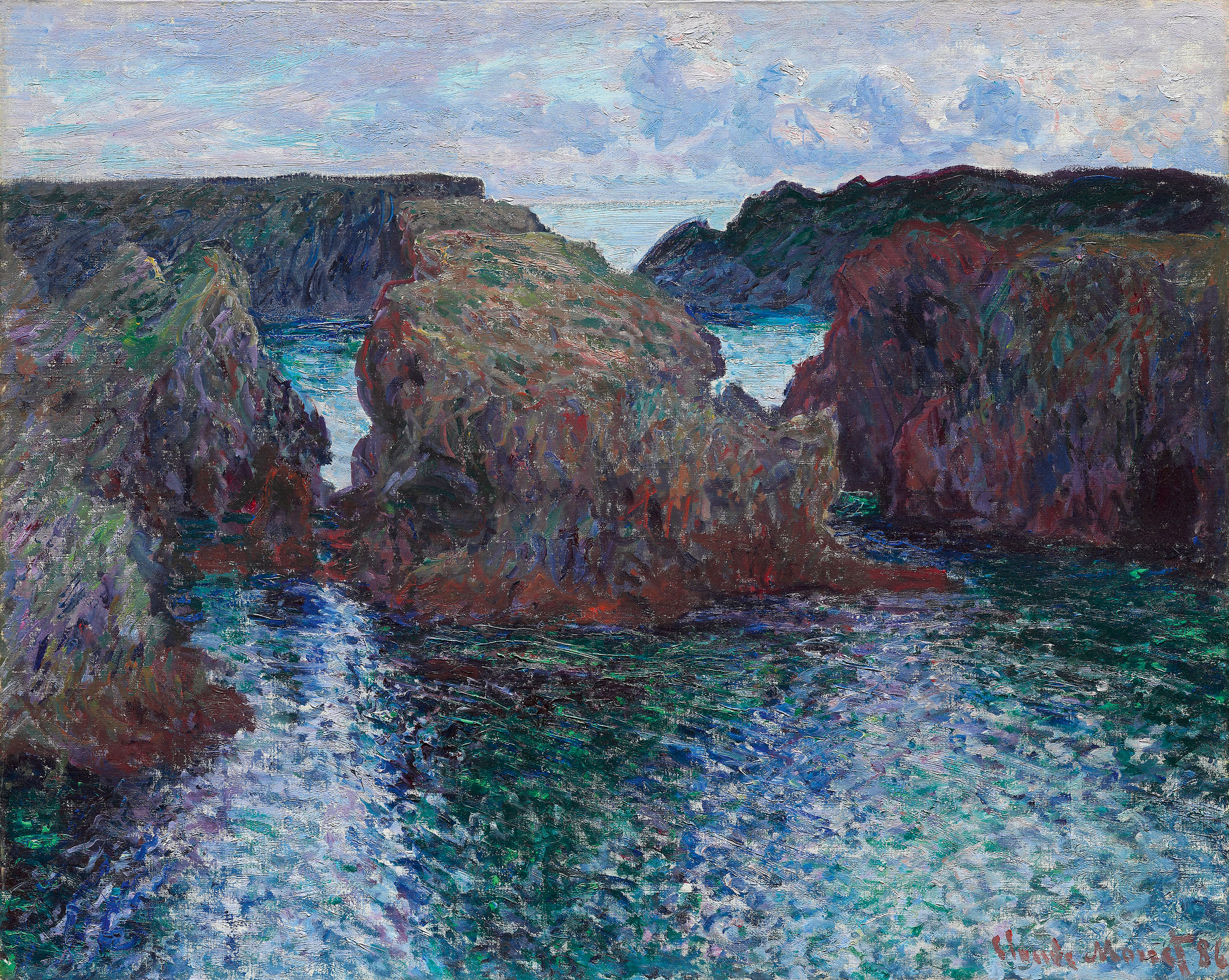
230256 MATISSE.jpg
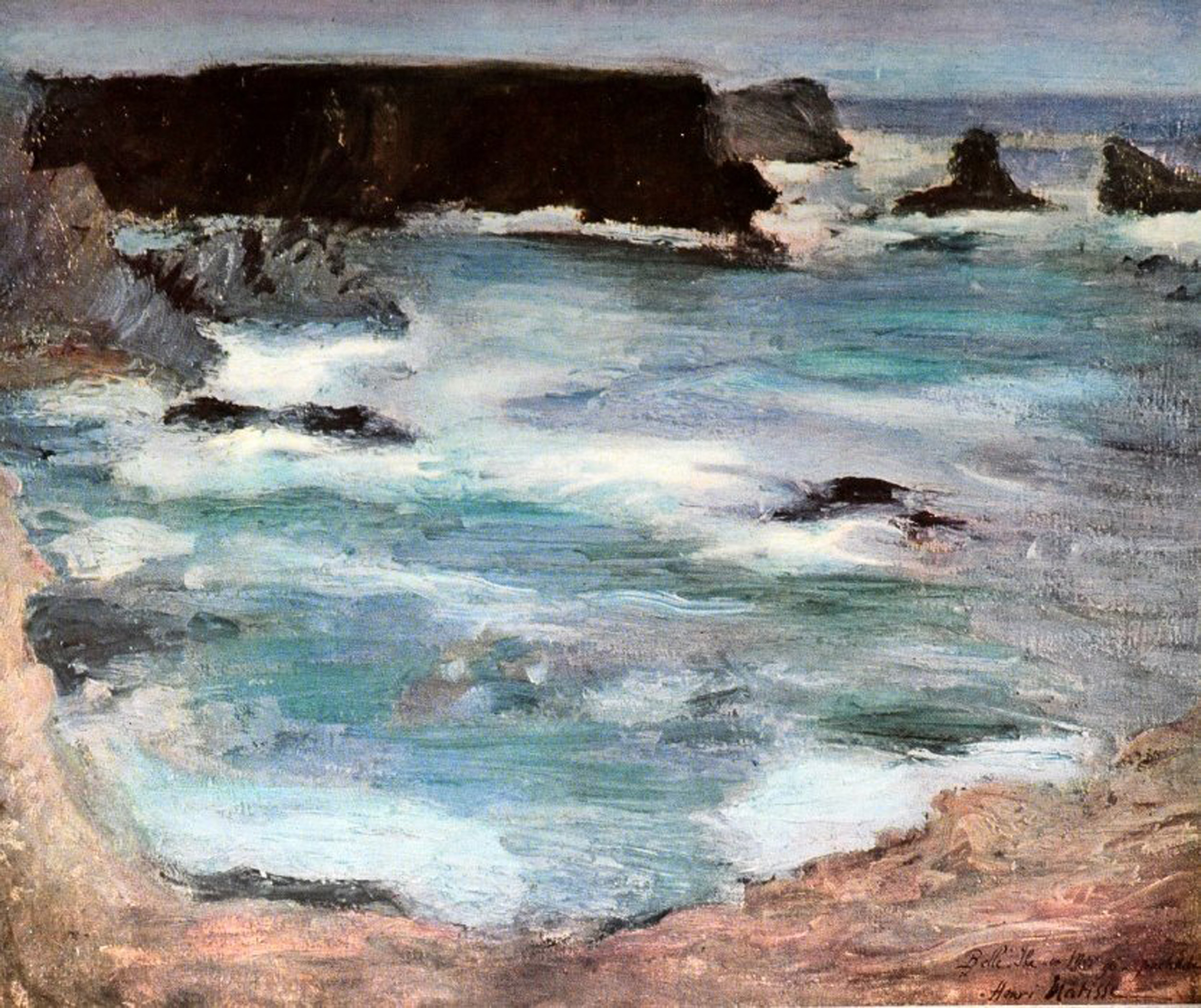
230256_cmyk.jpg
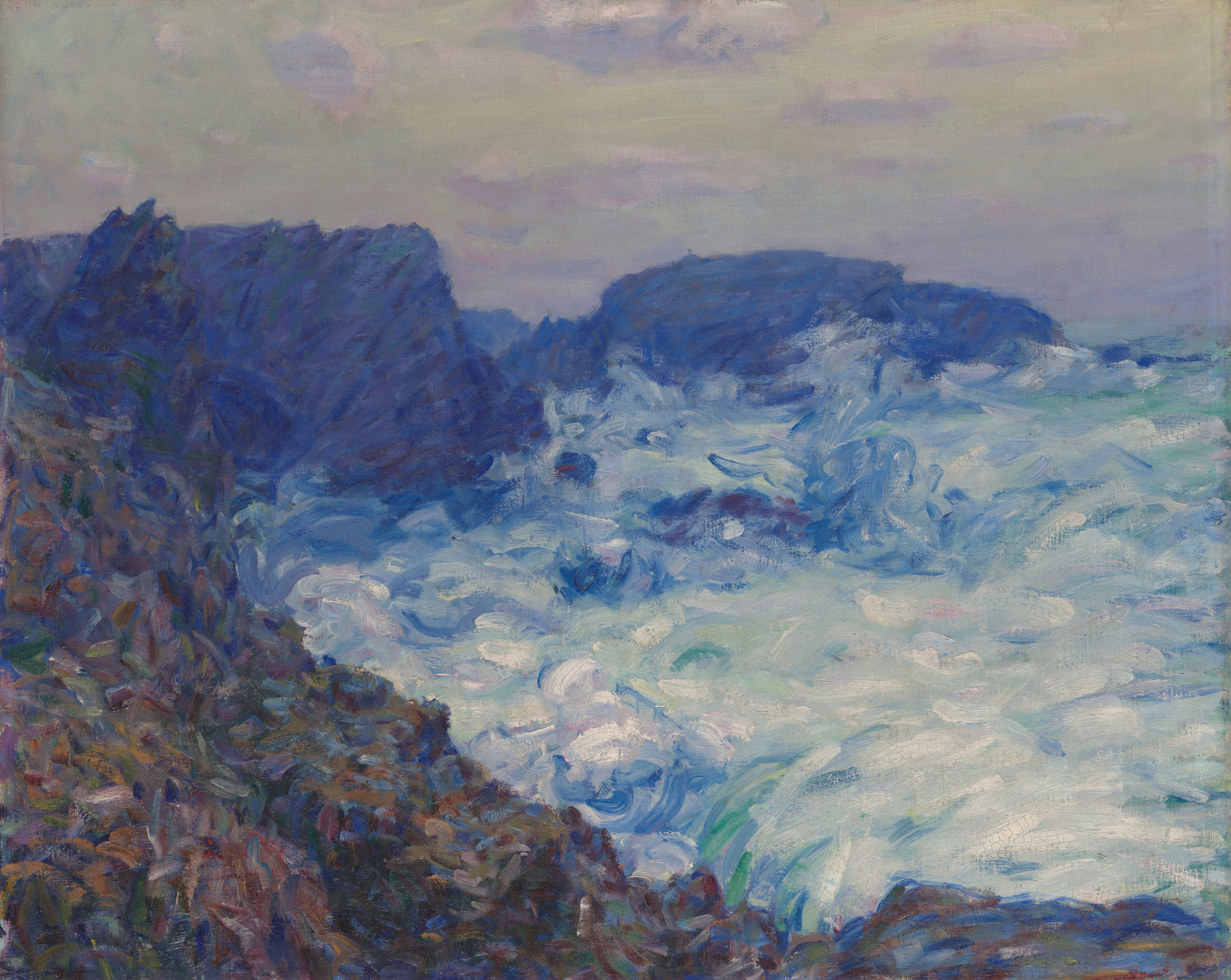
1. Although Russell did not see van Gogh again after he departed for Arles in the south of France in early 1888, their friendship continued via an extensive correspondence. See Galbally, A., A Remarkable Friendship: Vincent van Gogh and John Peter Russell, The Miegunyah Press, Melbourne, 2008
2. Taylor, E., ‘John Russell and friends: Roberts, Monet, van Gogh, Matisse, Rodin’, Australian Impressionists in France, National Gallery of Victoria, Melbourne, 2013, p. 60
3. Russell to Tom Roberts, 5 October 1887 quoted in Tunnicliffe, W., (ed.), John Russell: Australia’s French Impressionist, Art Gallery of New South Wales, Sydney, 2018, p. 53
4. Ibid., p. 193
5. See Onfray, G., translated by Lucie Reeves-Smith, “The most Breton of foreign painters of the era”, John-Peter Russell, Un impressionniste australien, Musée des Jacobins, Morlaix, 1997, pp. 8-9. Galbally, A., The Art of John Peter Russell, Sun Books, Melbourne, 1977, p. 28 and Tunnicliffe, ibid., p. 26
6. See Taylor, op. cit., p. 68
7. Sarah Bernhardt quoted in The summers of Sarah Bernhardt at Les Poulains | Belle-Île-en-Mer Tourist Office – Official Website (belleileenmer.co.uk), accessed 14 July 2023
8. Spurling, H., The Unknown Matisse: A Life of Henri Matisse, Volume One: 1869-1908, Hamish Hamilton, London, 1998, p. 144 quoted in Taylor, op. cit., p. 65
9. Russell to Auguste Rodin, April-May 1890 quoted in quoted in Prunster, U., ‘Painting Belle-Île’, Prunster, U., et al., Belle-Île: Monet, Russell and Matisse, Art Gallery of New South Wales, Sydney, 2001, p. 46
10. Claude Monet to Gustave Caillebotte, 11 October 1886, ibid., p. 19
11. Galbally, A., The Art of John Peter Russell, Sun Books, Melbourne, 1977, p. 47
12. Taylor, op. cit., p. 53
KIRSTY GRANT
